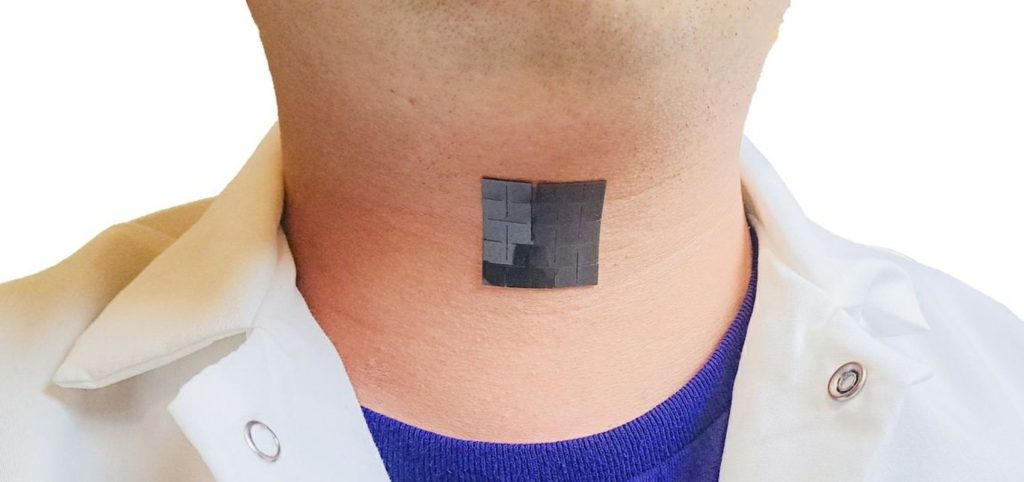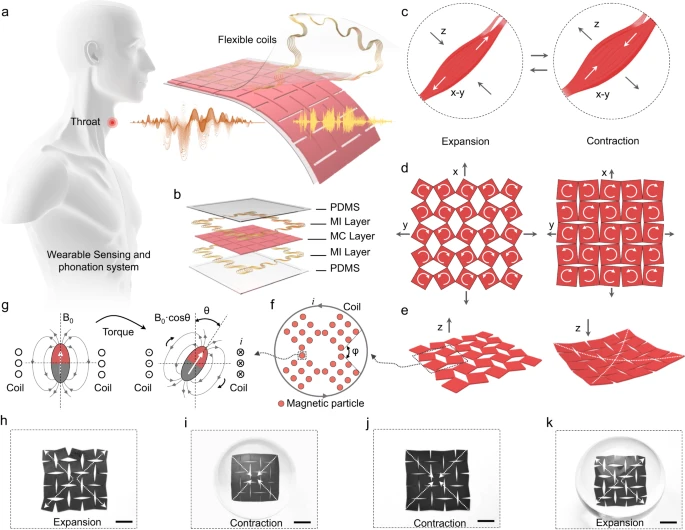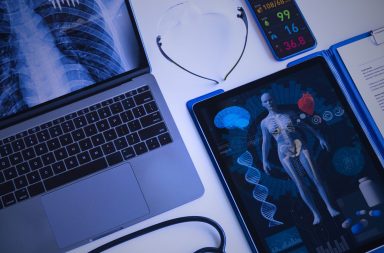A machine-learning-assisted system revolutionizes communication for patients with voice disorders
A team of researchers at UCLA has developed a revolutionary wearable device that allows individuals to speak without relying on their vocal folds. This breakthrough technology holds immense potential for assisting people with voice disorders resulting from various vocal fold conditions or postoperative recovery from laryngeal cancer surgeries.
The self-powered wearable sensing-actuation system is based on soft magnetoelasticity. Weighing only 7.2 grams and boasting a skin-like modulus, this lightweight device is stable against skin perspiration and offers a maximum stretchability of 164%. Its sensing component effectively captures the movement of extrinsic laryngeal muscles and converts them into high-fidelity electrical signals.
With the assistance of machine learning algorithms, the electrical signals are then translated into speech signals with an impressive accuracy rate of 94.68%. The wearable actuation component further converts these signals into voice signals, facilitating speech expression without relying on vocal fold vibrations.
Voice disorders can have a significant impact on an individual’s quality of life, hindering their ability to communicate effectively. Traditional solutions, such as handheld electrolarynx devices or invasive medical procedures, come with their own set of limitations. However, this wearable device offers a non-invasive and convenient alternative, significantly improving the daily lives of patients with dysfunctional vocal folds.

The device’s design incorporates a thin, flexible, and adhesive structure, providing optimal comfort for users. It consists of a polydimethylsiloxane (PDMS) layer, a magnetic induction (MI) layer made of serpentine copper coil, and a magnetomechanical coupling (MC) layer composed of magnetoelastic materials. The MC layer, featuring a kirigami structure, enhances the device’s sensitivity and stretchability.

In addition to its remarkable functionality, the wearable sensing-actuation system is intrinsically waterproof, ensuring durability even in the presence of heavy perspiration. It has been successfully tested for daily language transmissions, delivering clear and accurate output of voice signals.
The implications of this innovative technology extend beyond restoring normal voice function. By significantly reducing recovery time and eliminating the need for postoperative periods of absolute voice rest, the wearable device has the potential to enhance the overall quality of life for individuals with voice disorders.
With the successful development of this wearable sensing-actuation system, the researchers envision a game-changing solution for voice disorders that not only revolutionizes communication for patients but also paves the way for future advancements in wearable bioelectronics.
Further research and development are underway to refine and optimize this technology, with the goal of making it readily available to those who could benefit from it. As this device continues to evolve, it holds tremendous promise for transforming the lives of individuals with voice disorders, offering them a new means of communication and a renewed sense of empowerment.



